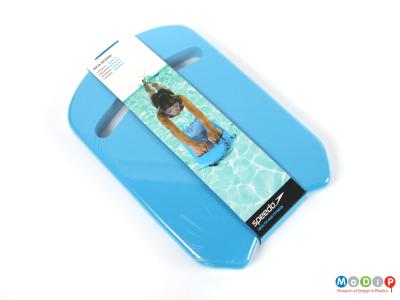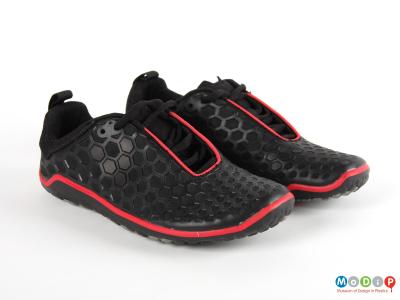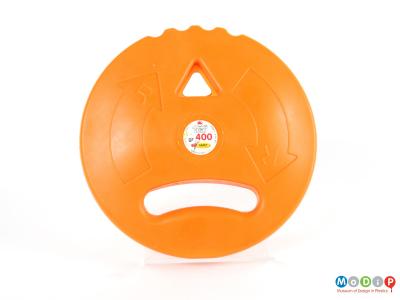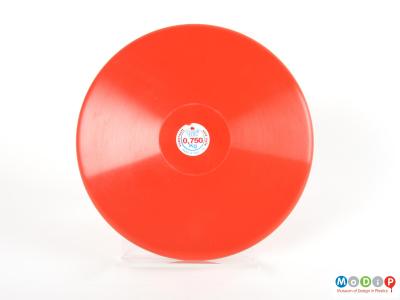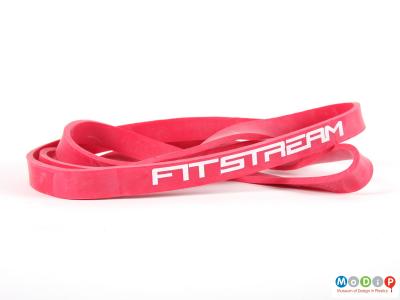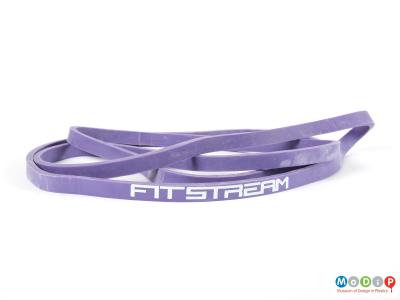Training is an important part of the life of the Olympian and Paralympian, athletes taking part in the London 2012 games will have been working towards the event for up to four years, training 7 days a week with few days off in the year.
Competing athletes use a variety of methods and equipment to improve their stamina, strength, and technique, many of which can be used by ordinary people to improve basic fitness levels.
Swimming is an excellent low impact exercise which improves lung capacity and body strength. The Speedo kick board (1) is designed to help get the most from a swimming workout, toning the lower body by improving leg strength and kick technique. It is made of ethylene vinyl acetate a lightweight material with a high buoyancy rating, allowing the float to support the arms whilst the swimmer concentrates on their legs.
As with swimming, running is used by athletes in different sports as a way of improving and maintaining general fitness levels. The mechanics in the foot work differently between walking and running. The walking motion sees us put our heel down first followed by the toe; we then lift the heel first in the next stride. In running more emphasis is placed on the front of the foot, landing on the ball of the foot and then the heel. We are more inclined to run in this natural way barefoot than when our feet are over supported by ordinary trainers. Barefoot shoes, such as the Evo Vivobarefoot trainers (2), have no arch support and an ultra-thin sole, and as such, offer the runner a sensation close to barefoot but with additional protection from the dangers on the running surface.
To increase the resistance training of running, the Power Suit™ vest (3) has concealed pockets on the inside which are designed to carry small weights up to an additional 9kg. Its Stomatex® fabric is a biomimetic material that imitates the process of transpiration used by leaves. Made of a non-porous polyester, the membrane has dome-shaped chambers, each with a tiny pore in the middle, which flex and stretch with the movement of the body. As a result excess heat and perspiration are pumped out of the small pores and drier cooler air enters at a pace relative to activity, creating a constant micro climate between the fabric and the skin.
Encouraging athletic skills in school children today will help Team GB to develop medal winning Olympians and Paralympians of the future. Athletics throwing sports do, however, require heavy and potentially dangerous equipment. Trial have a range of training equipment which can help the student develop the technique of throwing without causing themselves, or others, injury.
At 7.26kg for men and 4kg for women the full size shot-put is too heavy for children so the non-toxic foam reticulated rubber throwing ball (4) at 150g is an ideal teaching device. The 400g Beginners Handling Discus (5) is hollow and extremely light weight and has three options for hand placement. This means that the user is able to develop the correct arm and body motion before thinking about the specifics of hand positioning. The International Association for Athletics Federations (IAAF) approve training equipment like this discus as part of their Official Kids Athletics for Schools campaign. The 750g Beginners Discus (6) is more like the competitive discus used by senior athletes, with a more familiar shape and this time of solid rubber construction. In contrast, senior men throw a discus weighing 2kg and women throw 1.5kg. As with the handling discus the pocket javelin (7) improves one aspect of the sport. In this case the correct grip is encouraged with the moulded rubber textures and contours guiding the hand to sit correctly before adding the worry of the length and weight of the full sized javelin.
Resistance bands (8 - 9) introduce progressive intensity to standard weight training. During training sessions, powerlifters loop the band over the barbell, the other end secured to the floor, and as the bar is lifted it stretches the band. This increased tension helps to develop explosive power, speed, strength and increased acceleration.

